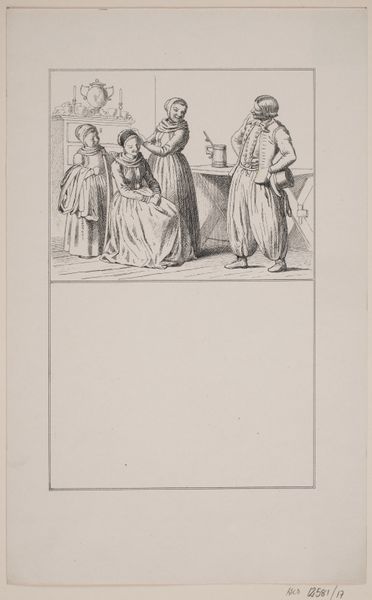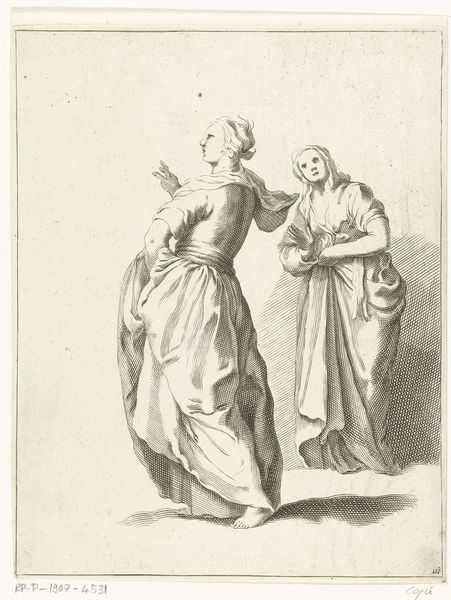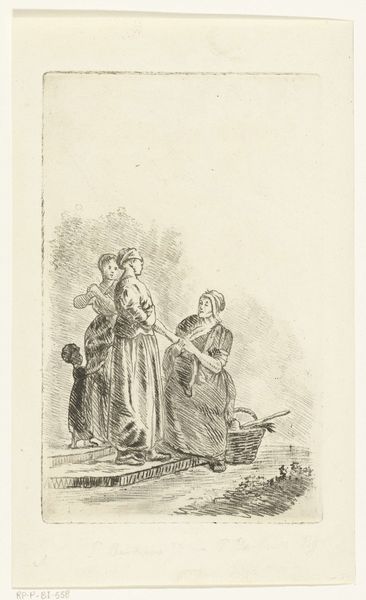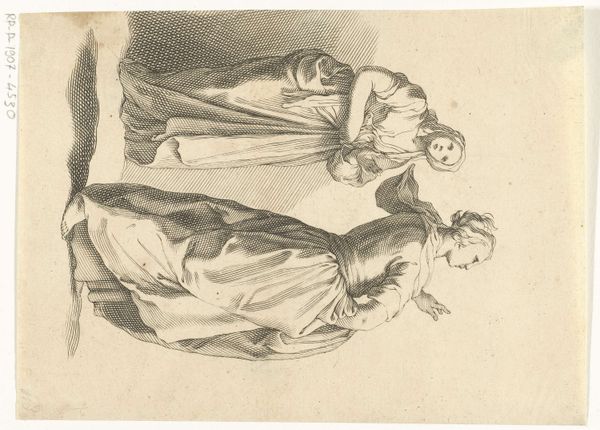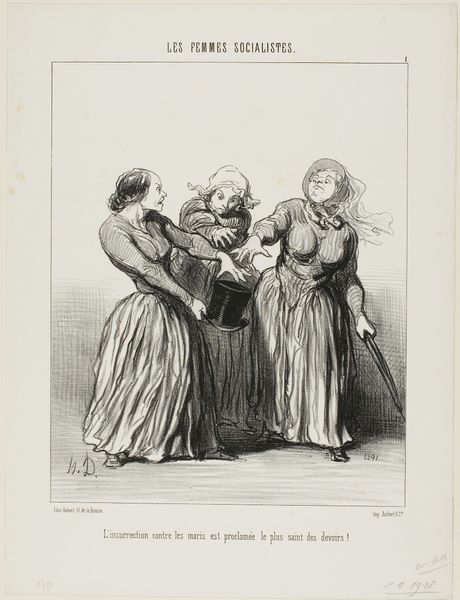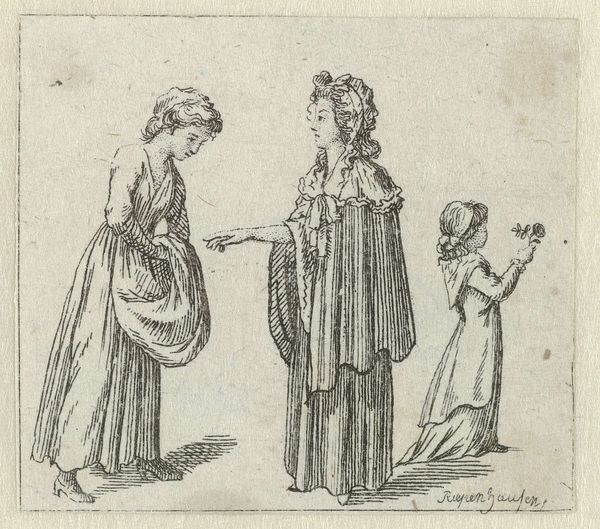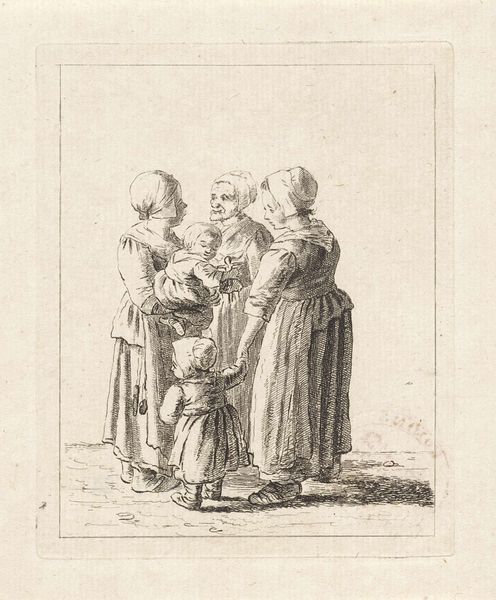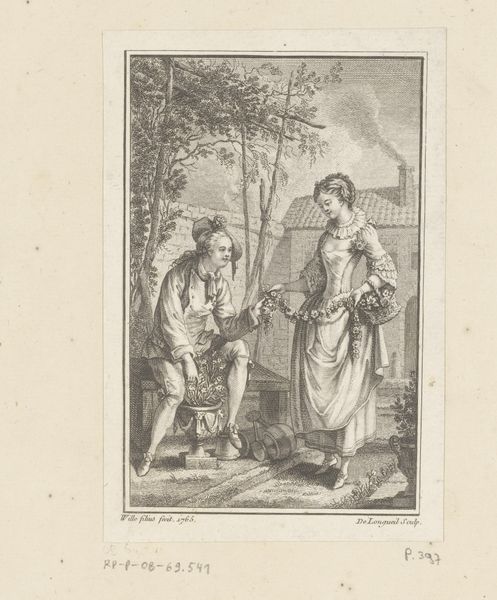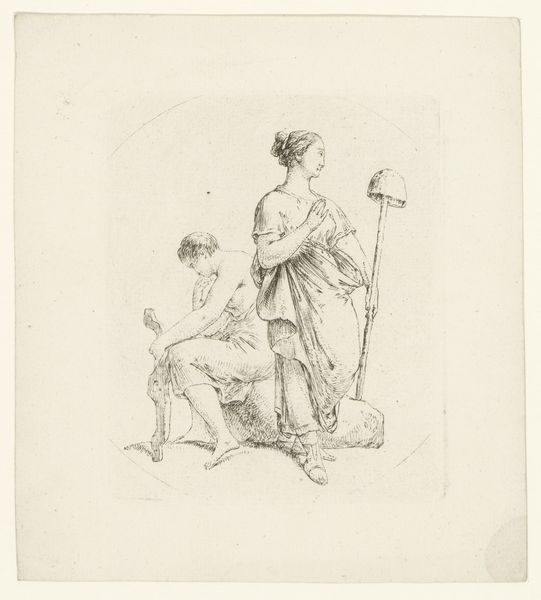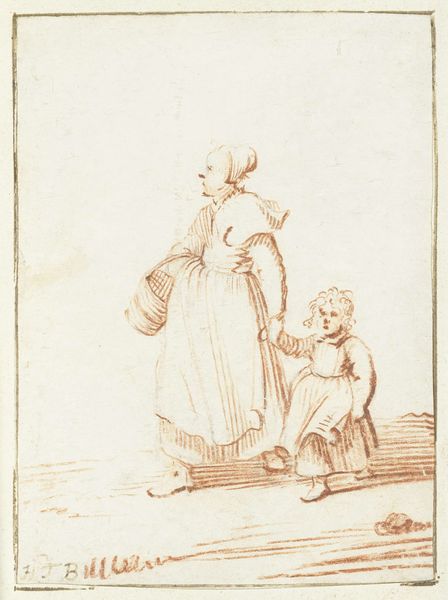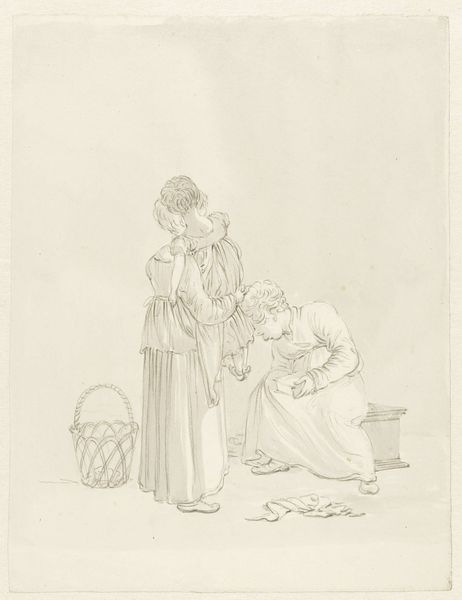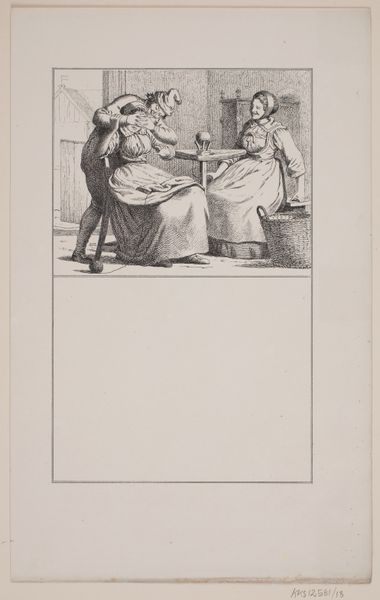
drawing, pencil
#
portrait
#
drawing
#
pencil sketch
#
romanticism
#
pencil
#
genre-painting
Dimensions: height 268 mm, width 187 mm
Copyright: Rijks Museum: Open Domain
Curator: This drawing, currently residing here at the Rijksmuseum, is titled "Twee vrouwen bij een waarzegster", or "Two Women with a Fortune Teller," created by Pieter Bartholomeusz. Barbiers between 1782 and 1837. It’s a remarkable example of Romanticism, rendered delicately in pencil. Editor: The mood is certainly somber, isn't it? Even in its preliminary sketch form, you can sense the artist exploring contrasts between age and youth, the known and unknown... it almost has an Ovidian tone with the furtive manner of its figures. Curator: Indeed, the composition reinforces this reading. Note the artist's deliberate use of line and shadow to guide our eye. The fortune teller occupies the lower left, framed by her basket, establishing a sense of grounded reality, whilst the women and the child inhabit a lighter area, almost an elevated, aspirational space. Editor: What strikes me is the medium. Pencil sketches are such direct things. Here we see the residue of Barbiers’ hand and labour so intimately, not just through the linework but in the very dust the graphite would have produced as he created the work. And I wonder, where did he source his materials? What quality was the paper and pencil? These details speak to broader economies of artistic production. Curator: That’s a fascinating perspective, focusing on the tangible history of the materials. To return to the visual elements, observe how the faces are rendered. The fortune teller's is etched with experience, whilst the younger women are more idealized, conveying innocence or perhaps uncertainty about what the future holds. Editor: Right, and this scene would have resonated powerfully within the societal structure of the day. Where and for whom might it have been produced? The access to fortune tellers and such divinations reflects something of everyday social and spiritual habits. What narratives and truths does it speak? Curator: Absolutely, you point to the artwork's capacity as a mirror reflecting the cultural values of the time. It underscores how we, as viewers, construct meaning. Editor: I leave appreciating the intersection of craftsmanship, commerce, and society that made this glimpse into the past possible. Curator: I am compelled to look again at the interplay of form and content that create narrative and, with some magic, transform a few graphite traces into something altogether transcendent.
Comments
No comments
Be the first to comment and join the conversation on the ultimate creative platform.
